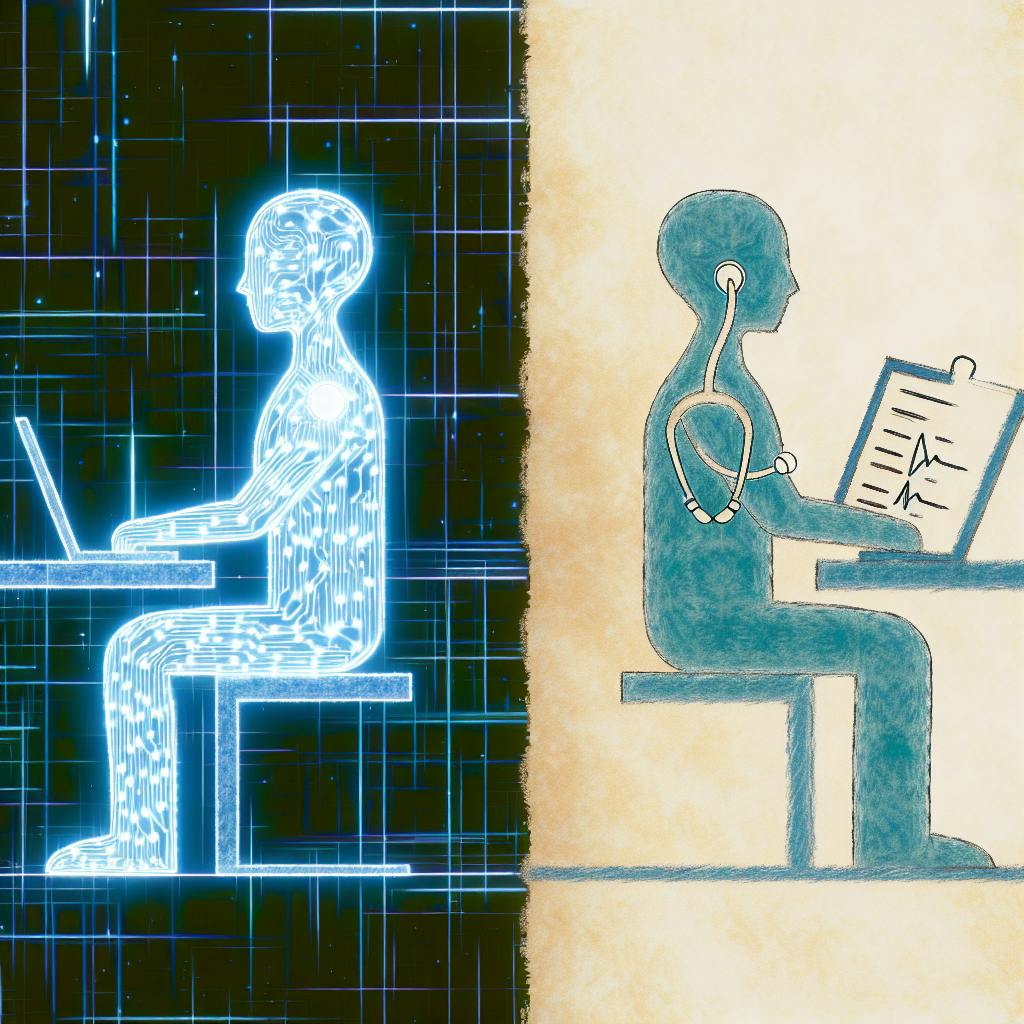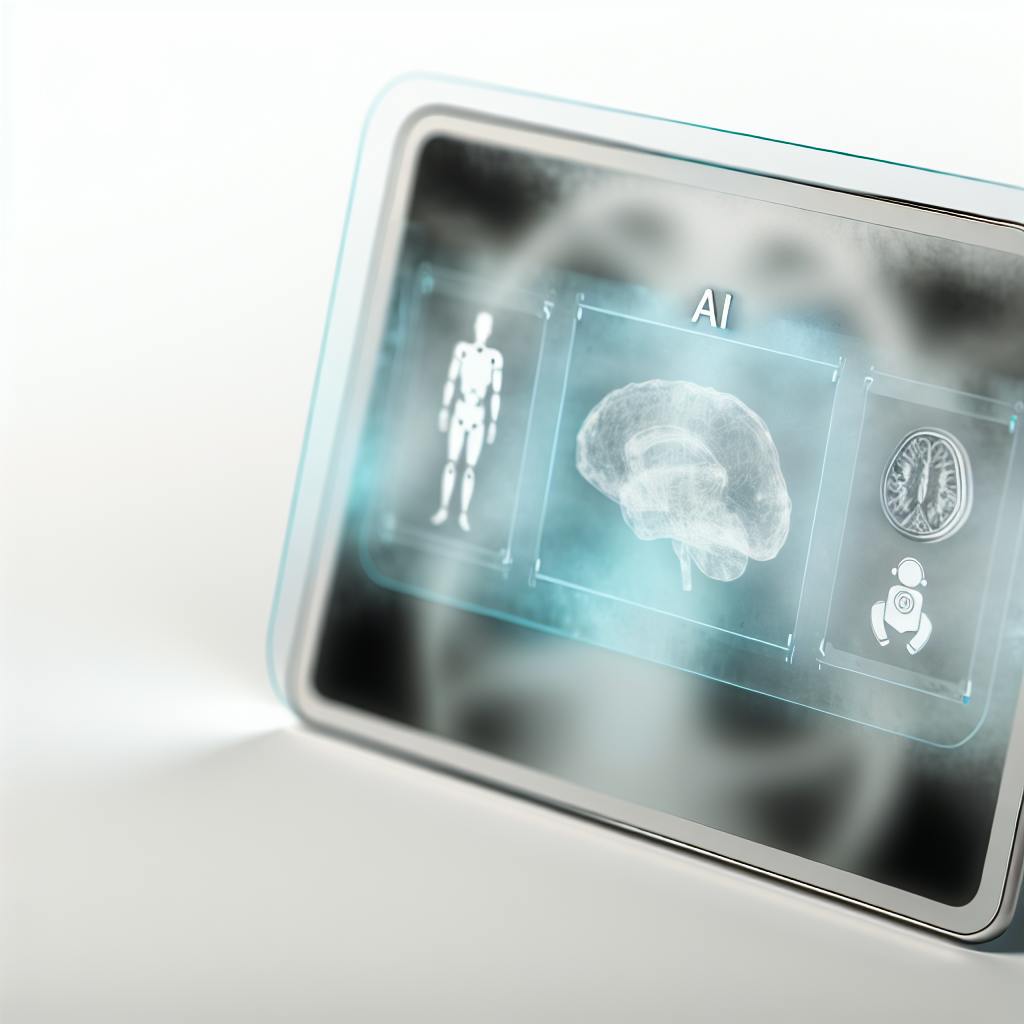AI medical scribes use advanced technologies like natural language processing (NLP) and machine learning to automate clinical documentation, reducing the time healthcare providers spend on administrative tasks by up to 90%. This allows providers to focus on delivering high-quality patient care.
Key Benefits of AI Scribes:
- Time Savings: Healthcare providers can save up to 2 hours per day by automating documentation
- Improved Accuracy: AI scribes ensure accurate and complete clinical notes, reducing errors
- Enhanced Patient Interactions: Providers can engage more with patients instead of typing notes
- Increased Productivity: Automating routine tasks enables providers to focus on high-value activities
| Feature | Description |
|---|---|
| Natural Language Processing (NLP) | Transcribes medical conversations into structured data |
| Machine Learning | Continuously improves accuracy and efficiency |
| Real-time Transcription | Generates notes during patient encounters for review |
| Customizable Templates | Tailored to specific specialties or procedures |
Success Stories:
- Dr. Rebekah Bernard: Saved 2 hours per day, redirected time to patient care and education
- Primary Care Clinic: Significant improvement in patient satisfaction ratings
- Specialty Clinic: Substantial increase in productivity, better patient outcomes, and reduced costs
By streamlining documentation, AI scribes transform chronic care management, enabling healthcare providers to deliver more efficient and effective patient-centered care.
Chronic Care Records: A Time-Consuming Task
Chronic care records are a critical part of healthcare, but they can be incredibly time-consuming for healthcare providers. Manual documentation involves entering patient data, which can lead to errors and inconsistencies. This process takes up a significant amount of healthcare staff's time, taking them away from patient care.
The Complexity of Chronic Care Documentation
Chronic care documentation requires gathering and recording a vast amount of information, including:
- Medical history
- Symptoms
- Diagnoses
- Treatment plans
- Ongoing care
This can be overwhelming and prone to errors, especially for patients with multiple conditions.
The Impact on Healthcare Providers' Workload
The time-consuming nature of chronic care documentation significantly impacts healthcare providers' workload. According to a study, healthcare providers spend up to 50% of their time on administrative tasks, including documentation. This takes away from the time they can spend with patients, providing quality care and building meaningful relationships.
The Potential for Documentation Errors
Manual documentation increases the risk of errors and inconsistencies. Incomplete or inaccurate records can lead to:
- Misdiagnosis
- Delayed treatment
- Poor patient outcomes
- Compliance issues
- Legal liabilities
In the next section, we will explore how AI scribes can help alleviate the challenges of chronic care documentation, reducing the administrative burden on healthcare staff and improving the accuracy and completeness of patient records.
AI Scribes: Streamlining Documentation
AI medical scribes are transforming the way healthcare providers approach chronic care documentation. These innovative solutions are designed to simplify the documentation process, reducing the administrative burden on healthcare staff and improving the accuracy and completeness of patient records.
Automated Documentation
AI scribes use natural language processing (NLP) and machine learning algorithms to automatically generate accurate and comprehensive clinical notes. This technology can transcribe conversations between healthcare providers and patients, as well as capture relevant information from medical histories, diagnoses, and treatment plans. By automating the documentation process, AI scribes free up healthcare providers to focus on delivering high-quality patient care.
Time-Saving Benefits
The benefits of AI scribes are clear: they significantly reduce the time spent on documentation. According to a study, AI-powered medical scribes can reduce documentation time by up to 90%. This enables healthcare providers to:
- See more patients
- Improve overall productivity
- Focus on direct patient care
Improved Accuracy
AI scribes also improve the accuracy of patient records, reducing the risk of errors and inconsistencies. By leveraging advanced algorithms and machine learning capabilities, AI scribes can identify and correct errors in real-time, ensuring that patient records are complete and accurate.
In the next section, we will explore how AI scribes work and the benefits they bring to clinical settings.
How AI Scribes Work
AI medical scribes use advanced technologies to understand and process medical speech, generating accurate and comprehensive clinical notes.
Natural Language Processing (NLP)
NLP allows AI scribes to comprehend medical conversations. This technology analyzes audio recordings of patient encounters, identifying key phrases, sentences, and medical terminology. NLP then translates this information into structured data, which is used to generate clinical notes.
Machine Learning Algorithms
Machine learning algorithms improve the accuracy and efficiency of AI scribes over time. These algorithms analyze data from various sources, including electronic health records (EHRs), medical literature, and feedback from healthcare providers. This analysis enables AI scribes to learn from their experiences, refining their understanding of medical language and improving their ability to generate accurate clinical notes.
Real-time Transcription and Customizable Templates
AI scribes can transcribe conversations in real-time, allowing healthcare providers to review and edit clinical notes during the patient encounter. Some AI scribes also offer customizable templates, which can be tailored to specific specialties or procedures. These templates ensure that clinical notes capture all relevant information, improving the quality and consistency of patient records.
| Feature | Description |
|---|---|
| Natural Language Processing (NLP) | Analyzes audio recordings of patient encounters to identify key phrases, sentences, and medical terminology |
| Machine Learning Algorithms | Improves accuracy and efficiency over time by analyzing data from various sources |
| Real-time Transcription | Transcribes conversations in real-time, allowing healthcare providers to review and edit clinical notes during the patient encounter |
| Customizable Templates | Tailored to specific specialties or procedures to ensure clinical notes capture all relevant information |
By leveraging these advanced technologies, AI medical scribes can streamline the documentation process, reducing the administrative burden on healthcare providers and improving the accuracy and completeness of patient records.
Benefits of AI Scribes in Clinical Settings
The integration of AI medical scribes in clinical settings has numerous advantages, transforming the way healthcare providers document patient encounters. By automating the documentation process, AI scribes significantly reduce the administrative burden on healthcare providers, allowing them to focus on what matters most: patient care.
Time Savings
One of the most significant advantages of AI scribes is the substantial time savings they offer. By automating the documentation process, healthcare providers can save up to 2 hours per day, which can be redirected towards patient care, education, and research. This reduction in administrative tasks also leads to increased job satisfaction among healthcare providers.
Enhanced Accuracy
AI scribes are designed to ensure accuracy and completeness in clinical documentation. By leveraging natural language processing (NLP) and machine learning algorithms, AI scribes can identify and correct errors in real-time, reducing the likelihood of misdiagnosis and improving patient outcomes.
Improved Patient-Provider Interactions
With AI scribes, healthcare providers can focus on engaging with patients, rather than typing away on a computer. This enhanced interaction leads to better patient satisfaction, improved patient engagement, and more accurate diagnosis.
Increased Productivity
By automating routine tasks, AI scribes enable healthcare providers to focus on high-value tasks, such as developing treatment plans and coordinating patient care. This increased productivity leads to improved patient outcomes, enhanced patient satisfaction, and reduced healthcare costs.
| Benefit | Description |
|---|---|
| Time Savings | Saves up to 2 hours per day, redirecting time to patient care, education, and research |
| Enhanced Accuracy | Ensures accuracy and completeness in clinical documentation, reducing errors and improving patient outcomes |
| Improved Patient-Provider Interactions | Enhances patient engagement and satisfaction, leading to more accurate diagnosis |
| Increased Productivity | Enables healthcare providers to focus on high-value tasks, improving patient outcomes and reducing healthcare costs |
By leveraging AI medical scribes, healthcare providers can revolutionize the way they document patient encounters, freeing up time to focus on what matters most: delivering high-quality patient care.
sbb-itb-527d68c
Success Stories: AI Scribes in Action
Real-world examples of healthcare providers who have successfully integrated AI scribes into their practice demonstrate the power of this technology. By automating the documentation process, AI scribes have enabled healthcare providers to focus on delivering high-quality patient care.
Dr. Rebekah Bernard's Experience
Dr. Rebekah Bernard, a primary care physician, was initially skeptical about using AI for medical documentation. However, after beta-testing an AI documentation system, she was impressed by its ability to accurately transcribe patient encounters and generate comprehensive SOAP notes. With AI scribes, Dr. Bernard was able to save up to 2 hours per day, which she redirected towards patient care and education.
Improved Patient Satisfaction at Primary Care Clinic
A primary care clinic in the United States implemented AI scribes to streamline their documentation process. As a result, they saw a significant improvement in patient satisfaction ratings. With AI scribes, healthcare providers were able to focus on engaging with patients, leading to better patient outcomes and increased patient loyalty.
Enhanced Productivity at Specialty Clinic
A specialty clinic in the United Kingdom integrated AI scribes into their practice, resulting in a substantial increase in productivity. By automating routine tasks, healthcare providers were able to focus on high-value tasks, such as developing treatment plans and coordinating patient care. This led to improved patient outcomes, enhanced patient satisfaction, and reduced healthcare costs.
| Success Story | Benefits |
|---|---|
| Dr. Rebekah Bernard | Saved up to 2 hours per day, redirected towards patient care and education |
| Primary Care Clinic | Significant improvement in patient satisfaction ratings |
| Specialty Clinic | Substantial increase in productivity, improved patient outcomes, enhanced patient satisfaction, and reduced healthcare costs |
These success stories demonstrate the tangible benefits of AI-powered medical scribes in clinical settings. By automating the documentation process, healthcare providers can focus on delivering high-quality patient care, leading to improved patient outcomes, enhanced patient satisfaction, and reduced healthcare costs.
Implementing AI Scribes: Addressing Challenges
Implementing AI scribes in healthcare settings can be complex, and several challenges may arise. In this section, we will address some common hurdles healthcare providers may face when adopting AI scribe technology.
Data Security and Privacy
Ensuring the security and privacy of patient data is crucial. Healthcare providers must ensure the AI system is HIPAA-compliant and has robust encryption, authentication, and authorization features to safeguard sensitive patient information.
Integration with Existing Systems
Seamless integration with existing electronic health record (EHR) systems and other healthcare technology platforms is essential. This ensures accurate and efficient transfer of patient data between systems.
Resistance to Change
Healthcare providers may encounter resistance to change from staff members accustomed to traditional documentation methods. Addressing these concerns through training and education is vital to ensure a smooth transition to AI-powered documentation.
Ensuring Accuracy and Quality
Healthcare providers must ensure the AI scribe system produces high-quality, accurate documentation that meets clinical standards. Ongoing monitoring and evaluation of the system's performance are necessary to identify areas for improvement.
Best Practices for Implementation
To overcome these challenges, healthcare providers can follow best practices for implementing AI scribes:
| Best Practice | Description |
|---|---|
| Conduct thorough vendor research and evaluation | Evaluate AI scribe vendors to ensure they meet healthcare providers' needs |
| Develop a comprehensive implementation plan | Create a plan to ensure a smooth transition to AI-powered documentation |
| Provide training and support for staff members | Educate staff on AI scribe technology to address concerns and ensure successful adoption |
| Establish clear policies and procedures for AI scribe use | Develop guidelines for AI scribe use to ensure consistency and accuracy |
| Continuously monitor and evaluate system performance | Regularly assess the AI scribe system's performance to identify areas for improvement |
By addressing these common challenges and following best practices, healthcare providers can successfully implement AI scribe technology and reap the benefits of improved efficiency, accuracy, and patient care.
The Future of AI Scribes in Healthcare
The future of AI scribes in healthcare looks promising, with ongoing advancements in AI technology expected to further improve their capabilities. Integration with other healthcare systems, like telemedicine platforms, will expand their reach and impact. Moreover, AI has the potential to revolutionize medical education and training, providing valuable tools and resources for students and healthcare professionals.
Expected Improvements
AI scribe technology is expected to improve in the following areas:
| Area of Improvement | Description |
|---|---|
| Natural Language Processing (NLP) | More accurate and efficient transcription of patient encounters |
| Integration with Electronic Health Records (EHRs) | Seamless access to patient information, streamlining the documentation process |
| Specialized AI Scribes | Development of AI scribes tailored to specific medical specialties |
The future of AI scribes in healthcare is not only about improving documentation but also about enhancing patient care, reducing physician burnout, and increasing job satisfaction for healthcare providers. As the technology continues to evolve, we can expect significant transformations in the way healthcare is delivered and received.
Conclusion: AI Scribes Transform Chronic Care
The integration of AI medical scribes into chronic care has significantly improved the way healthcare providers document patient encounters. By automating the documentation process, AI scribes have reduced the time spent on administrative tasks, allowing physicians to focus on patient care.
Time Savings and Improved Accuracy
AI scribes have been shown to reduce documentation time by 90%, enabling healthcare providers to see more patients and improve overall job satisfaction. Additionally, AI scribes improve the accuracy and completeness of clinical documentation, leading to better patient outcomes and reduced medical errors.
The Future of Chronic Care
As AI technology continues to evolve, we can expect even more advanced features and capabilities that will further transform the way healthcare is delivered and received. With AI scribes, healthcare providers can provide high-quality, patient-centered care while reducing costs and improving operational efficiency.
Key Takeaways
| Benefit | Description |
|---|---|
| Time Savings | 90% reduction in documentation time |
| Improved Accuracy | Enhanced accuracy and completeness of clinical documentation |
| Better Patient Outcomes | Improved patient outcomes and reduced medical errors |
| Increased Efficiency | Reduced costs and improved operational efficiency |
In conclusion, AI medical scribes have transformed chronic care by streamlining documentation, improving accuracy, and enhancing patient care. As the healthcare landscape continues to evolve, AI scribes will play an increasingly important role in shaping the future of healthcare.
FAQs
What is the role of AI in chronic disease management?
AI helps manage chronic diseases by analyzing patient data, such as blood glucose levels, blood pressure, and medication use. This analysis enables AI to identify high-risk patients, allowing healthcare providers to intervene early and prevent further complications.
Can artificial intelligence technology replace human scribes?
Although AI-generated transcripts are accurate, AI scribes are not a replacement for clinicians. AI scribes may produce inconsistencies that require physicians' review and editing to ensure accuracy and alignment with the physician-patient relationship.
| AI Scribe Limitations | Description |
|---|---|
| Inconsistencies | Require physicians' review and editing |
| Lack of clinical judgment | Cannot replace clinicians' expertise and decision-making |
| Dependence on data quality | Accuracy relies on high-quality patient data |
By understanding these limitations, healthcare providers can effectively integrate AI scribes into their practice, improving documentation efficiency and patient care.


